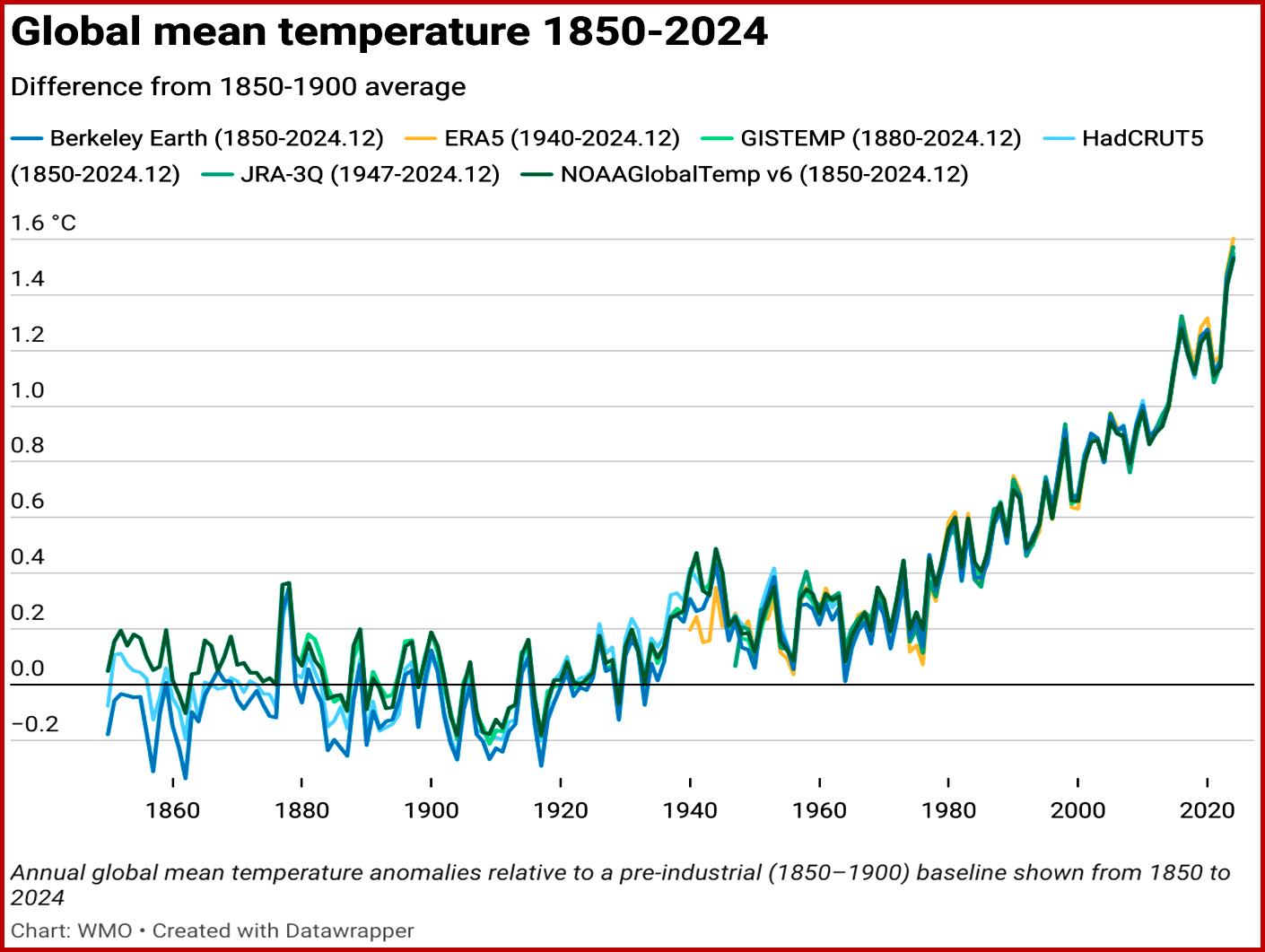Click for more.
Temperatures are a Small Part of a Much Bigger Problem
“Data for 2024 show that our oceans continued to warm, and sea levels continued to rise. The frozen parts of Earth’s surface, known as the cryosphere, are melting at an alarming rate: glaciers continue to retreat, and Antarctic sea ice reached its second-lowest extent ever recorded. Meanwhile, extreme weather continues to have devastating consequences around the world,” said Saulo.
Tropical cyclones, floods, droughts, and other hazards in 2024 led to the highest number of new displacements recorded for the past 16 years, contributed to worsening food crises, and caused massive economic losses.
“In response, WMO and the global community are intensifying efforts to strengthen early warning systems and climate services to help decision-makers and society at large be more resilient to extreme weather and climate. We are making progress but need to go further and need to go faster. Only half of all countries worldwide have adequate early warning systems. This must change,” said Saulo. Investment in weather, water and climate services is more important than ever to meet the challenges and build safer, more resilient communities, she stressed.
The report is based on scientific contributions from National Meteorological and Hydrological Services, WMO Regional Climate Centers, UN partners and dozens of experts. It includes sidebars on monitoring global temperature for the Paris Agreement and understanding the temperature anomalies in 2023 and 2024. It includes supplements on climate services and on extreme weather.


